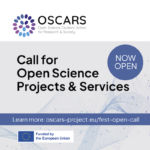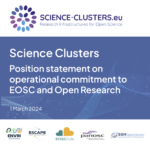PaNOSC at IUCr 2023
On 25 August 2023, Andy Götz gave the talk “Europe’s Photon and Neutron Open Science Cloud for Raw and Processed Data: Aims and Achievements to Date at the IUCr 2023 event held at the Melbourne Convention and Exhibition Centre.
Presentation’s abstract
The Photon and Neutron Open Science Cloud (PaNOSC) and the European Open Science Cloud Photon and Neutron Data Services (ExPaNDS) are two European Community financed projects comprised of 8 synchrotrons, 2 FELs, 3 laser and 4 neutron central facilities, which have been established in Europe to facilitate Open Science, an enhanced science methodology. Through such a coordination there can be (i) an increased fraction of published research by release of raw data to the public after a 3 year embargo period (ii) in cases of an agreed cooperation between specific research communities where measurements are now outpacing the capabilities of individual teams to analyse the raw data (iii) for more conventional ‘single research team’ science publication can be underpinned by a single digital
object identifier (DOI) to the appropriate dataset held in the facility data archive, without need for raw dataset transfer to the home university. The implementation of data archiving is facilitated by great increases in tape storage capabilities. There are 30 case studies that document the opportunities of these projects including open science and reproducibility of science. Crystallography, diffraction and scattering experiments certainly yield big data flows at the relevant ESRF EBS beamlines with Xray imaging, EM and SSX beamlines reach massive data flow levels. All these benefits must be balanced with carbon footprint of such a data archive in today’s world. The carbon footprint of archiving petabytes of data is a balancing act between the financial cost, the impact on the environment and the value
of the data compared to the cost of redoing the experiment. The example of the ESRF data archive, which is based on “cold storage” (i.e., tape storage), has been used to illustrate how the different costs can be calculated and compared.


